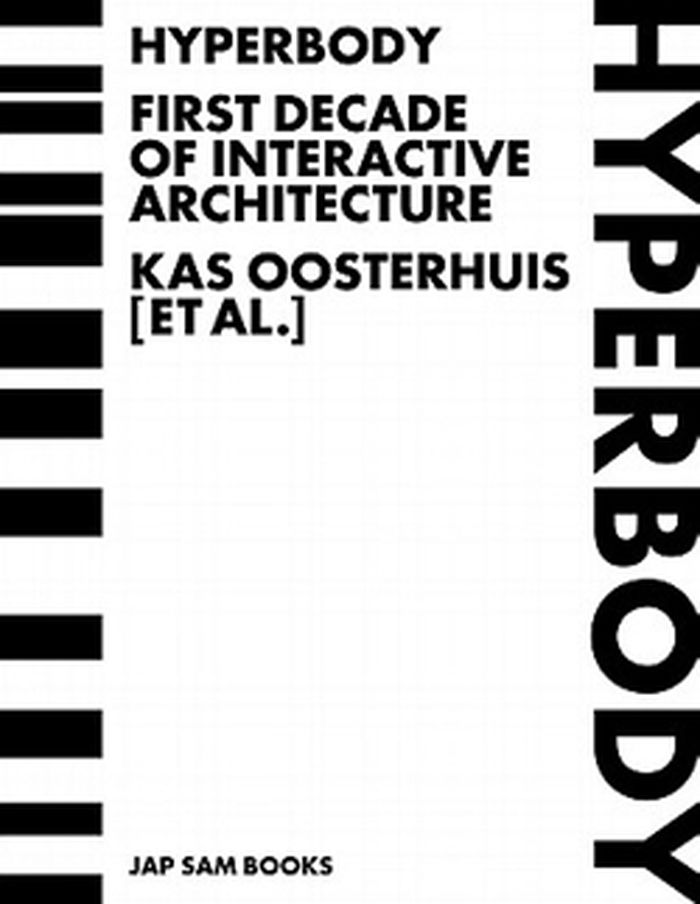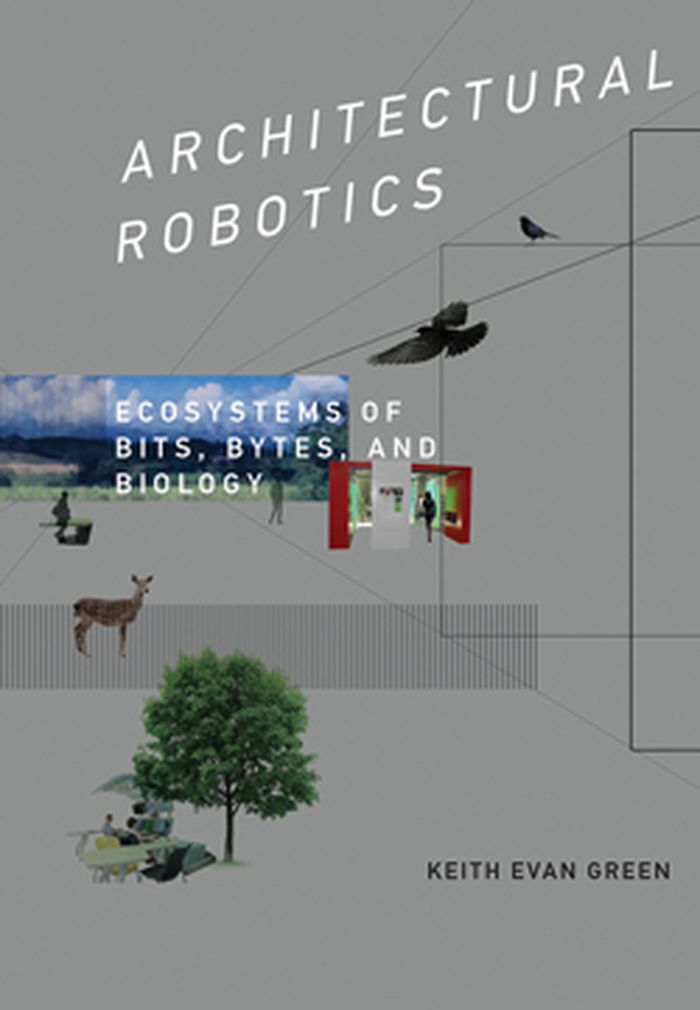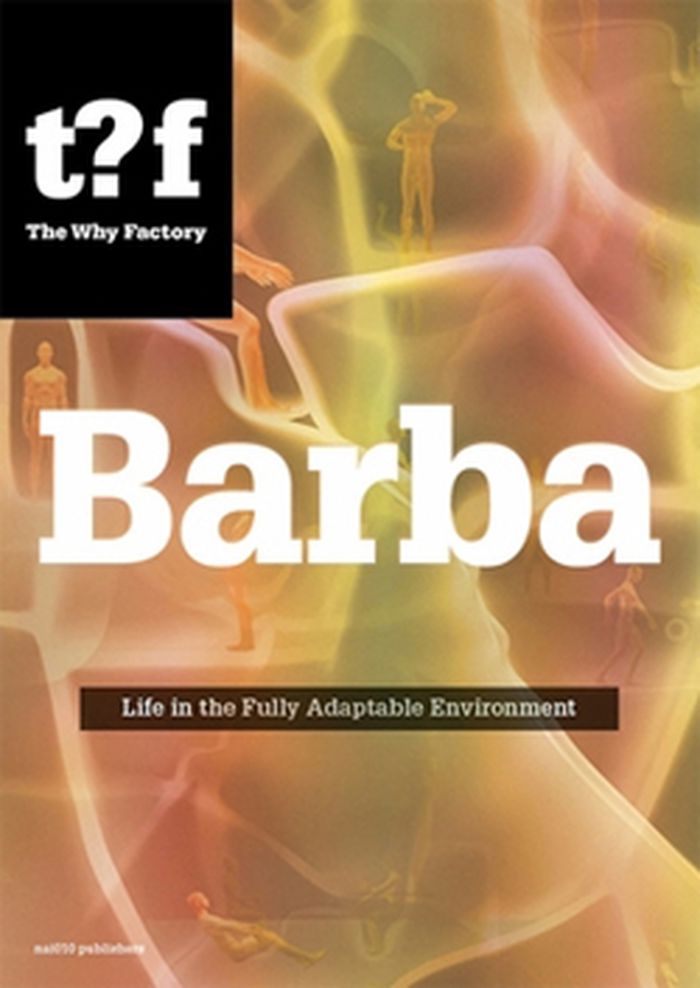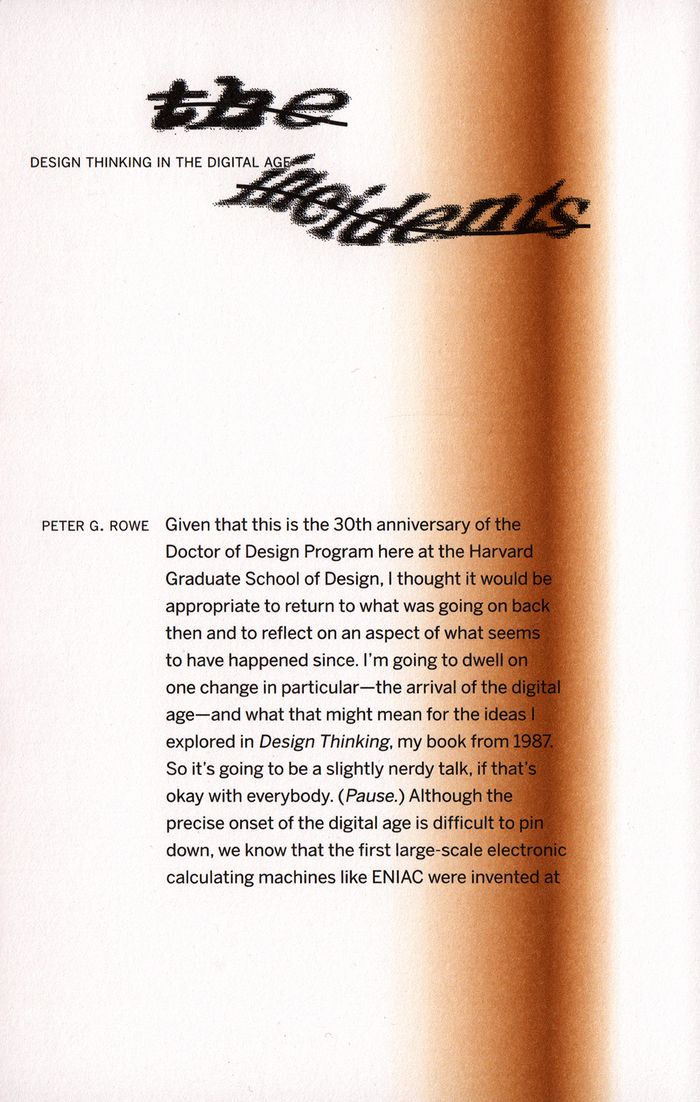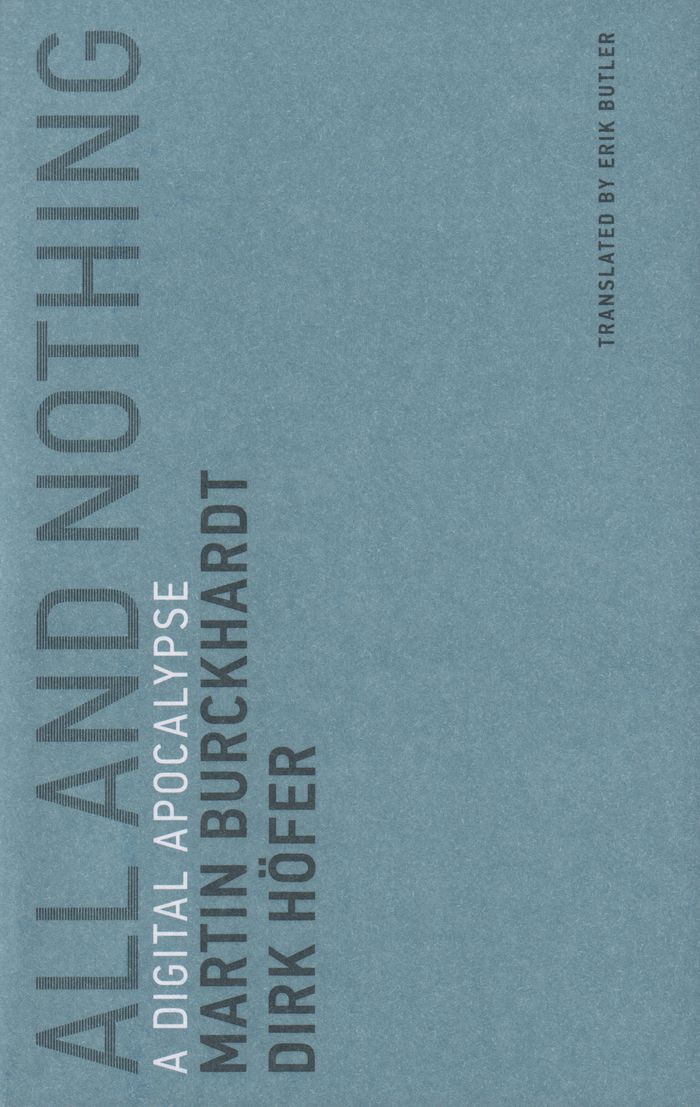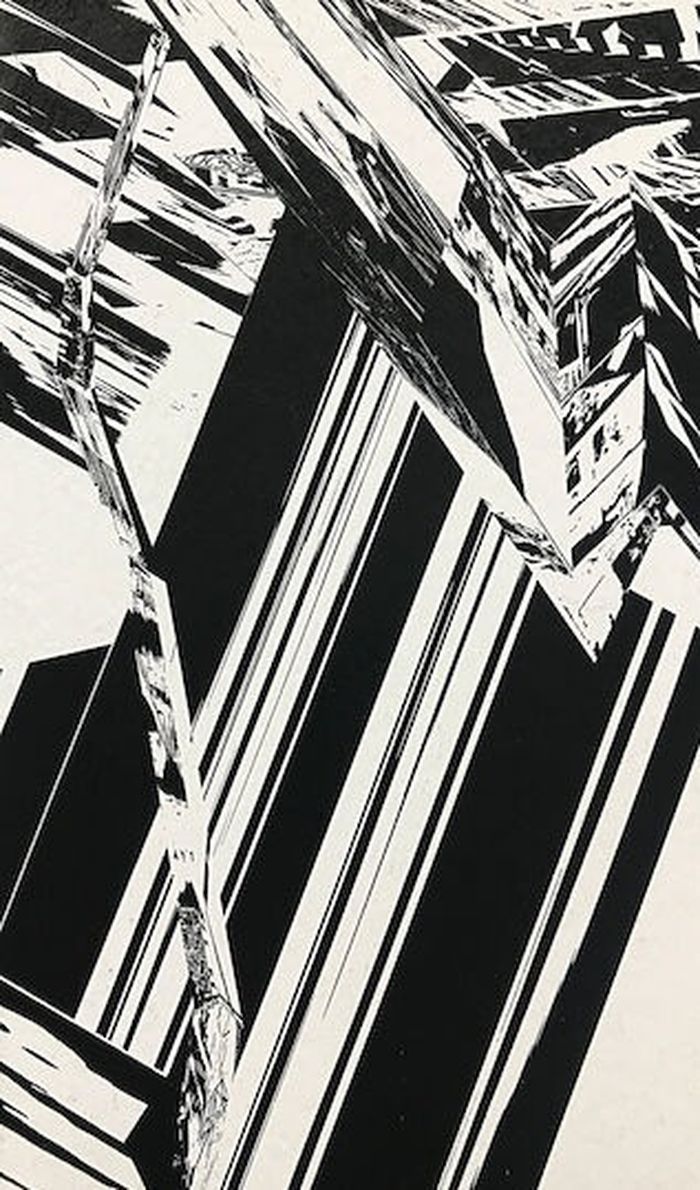livres
$29.95
(disponible sur commande)
Résumé:
This book celebrates the design ingenuity made possible by digital fabrication techniques. Author Lisa Iwamoto explores the methods architects use to calibrate digital designs with physical forms. The book is organized according to five types of digital fabrication techniques: tessellating, sectioning, folding, contouring, and forming. Projects are shown both in their(...)
Digital fabrications : architectural and material techniques
Actions:
Prix:
$29.95
(disponible sur commande)
Résumé:
This book celebrates the design ingenuity made possible by digital fabrication techniques. Author Lisa Iwamoto explores the methods architects use to calibrate digital designs with physical forms. The book is organized according to five types of digital fabrication techniques: tessellating, sectioning, folding, contouring, and forming. Projects are shown both in their finished forms and in working drawings, templates, and prototypes, allowing the reader to watch the process of each fantastic construction unfold. The publication also presents projects designed and built by emerging practices that pioneer techniques and experiment with fabrication processes on a small scale with a do-it-yourself attitude. Featured architects include AEDS/Ammar Eloueini, Atelier Manferdini, Brennan Buck, MOS, Office dA, Florencia Pita/MOD, Mafoomby, URBAN A+O, SYSTEMarchitects, Andrew Kudless/Matsys, IwamotoScott, Atelier Hitoshi Abe, Chris Bosse, Tom Wiscombe/EMERGENT, Thom Faulders Architecture, Jeremy Ficca, SPAN, GNUFORM, Heather Roberge, PATTERNS, Ruy Klein, and servo.
livres
janvier 2009
$82.95
(disponible en magasin)
Résumé:
Hyperbody, initiated by Kas Oosterhuis and headquartered at the Delft University of Technology, is a think tank on new ways of designing and creating non standard and interactive architecture. This huge book is the first time Hyperbody has published it collaborative projects and experiments within the real world of design and construction. The designers of the paradigm(...)
octobre 2011
Hyperbody : first decade of interactive architecture
Actions:
Prix:
$82.95
(disponible en magasin)
Résumé:
Hyperbody, initiated by Kas Oosterhuis and headquartered at the Delft University of Technology, is a think tank on new ways of designing and creating non standard and interactive architecture. This huge book is the first time Hyperbody has published it collaborative projects and experiments within the real world of design and construction. The designers of the paradigm changing MCAT system of architectural software, Hyperbody continues to play with software design and futurism, creating a broad and influential new dialog. This collection of writings looks at new software tools for real time interaction and parametric design and application of new production techniques file to factory production and mass customization, among other projects, applying cutting edge design methods and theories.
AD Performance-oriented architecture: rethinking architectural design and the built environment
$44.00
(disponible sur commande)
Résumé:
This book offers an innovative and highly practical approach to architectural design. Focusing on the concept of performance that brought about a paradigm shift in the humanities in earlier decades, the book discusses how to use this concept to address ongoing problems in architecture. It explores the meaning of performance in the context of the built environment, design(...)
AD Performance-oriented architecture: rethinking architectural design and the built environment
Actions:
Prix:
$44.00
(disponible sur commande)
Résumé:
This book offers an innovative and highly practical approach to architectural design. Focusing on the concept of performance that brought about a paradigm shift in the humanities in earlier decades, the book discusses how to use this concept to address ongoing problems in architecture. It explores the meaning of performance in the context of the built environment, design processes, sustainable architecture, spatial organization, and other aspects of design. Featuring numerous color illustrations plus historical and contemporary examples, this is an eye-opening resource for architects and urban designers.
Architecture numérique
$42.00
(disponible sur commande)
Résumé:
In this book, Keith Evan Green looks toward the next frontier in computing: interactive, partly intelligent, meticulously designed physical environments. Green examines how these "architectural robotic" systems will support and augment us at work, school, and home, as we roam, interconnect, and age.
Architectural Robotics: Ecosystems of Bits, Bytes, and Biology
Actions:
Prix:
$42.00
(disponible sur commande)
Résumé:
In this book, Keith Evan Green looks toward the next frontier in computing: interactive, partly intelligent, meticulously designed physical environments. Green examines how these "architectural robotic" systems will support and augment us at work, school, and home, as we roam, interconnect, and age.
Architecture numérique
$57.50
(disponible en magasin)
Résumé:
How might nanotechnology—the manipulation of matter at the level of atoms and molecules—change buildings and cities in the future? The authors of Barba have imagined one possible future, shaped by a miraculous nanomaterial of the same name, which can be steered and altered in real time, changing its shape and size at will. With Barba, the authors speculate, the built(...)
Barba: Life in the Fully Adaptable Environment
Actions:
Prix:
$57.50
(disponible en magasin)
Résumé:
How might nanotechnology—the manipulation of matter at the level of atoms and molecules—change buildings and cities in the future? The authors of Barba have imagined one possible future, shaped by a miraculous nanomaterial of the same name, which can be steered and altered in real time, changing its shape and size at will. With Barba, the authors speculate, the built environment can be adapted almost immediately to every desire and every need. This volume, the latest in The Why Factory’s Future Cities series, envisions the dramatic potential of nanomaterial to change cities and architecture in the not-so-distant future, further explored in a series of interactive experiments and installations. Part speculative architecture, part science fiction, Barba follows an inhabitant of this flexible future world for a day, daring the reader to imagine life in a fully adaptable environment.
Architecture numérique
$23.95
(disponible sur commande)
Résumé:
In this essay, professor Peter G. Rowe gives an overall description of how new technologies transformed the field of architectural design, addressing issues such as the precision and incompleteness of information, schema theory and heuristics.
Design thinking in the digital age
Actions:
Prix:
$23.95
(disponible sur commande)
Résumé:
In this essay, professor Peter G. Rowe gives an overall description of how new technologies transformed the field of architectural design, addressing issues such as the precision and incompleteness of information, schema theory and heuristics.
Architecture numérique
$21.95
(disponible sur commande)
Résumé:
In 1854, the British mathematician George Boole presented the idea of a universe the elements of which could be understood in terms of the logic of absence and presence: 0 and 1, all and nothing—the foundation of binary code. The Boolean digits 0 and 1 do not designate a quantity. In the Boolean world, x times x always equals x; all and nothing meet in the formula x = xn.(...)
All and nothing : a digital apocalypse
Actions:
Prix:
$21.95
(disponible sur commande)
Résumé:
In 1854, the British mathematician George Boole presented the idea of a universe the elements of which could be understood in terms of the logic of absence and presence: 0 and 1, all and nothing—the foundation of binary code. The Boolean digits 0 and 1 do not designate a quantity. In the Boolean world, x times x always equals x; all and nothing meet in the formula x = xn. As everything becomes digitized, God the clockmaker is replaced by God the programmer. This book–described by its authors as “a theology for the digital world”—explores meaning in a digital age of infinite replication, in a world that has dissolved into information and achieved immortality by turning into a pure sign.
Architecture numérique
$49.95
(disponible sur commande)
Résumé:
Fabricate 2020 is the fourth title in the FABRICATE series on the theme of digital fabrication and published in conjunction with a triennial conference (London, April 2020). The book features cutting-edge built projects and work-in-progress from both academia and practice. It brings together pioneers in design and making from across the fields of architecture,(...)
Architecture numérique
février 2020
Fabricate 2020: making resilient architecture
Actions:
Prix:
$49.95
(disponible sur commande)
Résumé:
Fabricate 2020 is the fourth title in the FABRICATE series on the theme of digital fabrication and published in conjunction with a triennial conference (London, April 2020). The book features cutting-edge built projects and work-in-progress from both academia and practice. It brings together pioneers in design and making from across the fields of architecture, construction, engineering, manufacturing, materials technology and computation. Fabricate 2020 includes 32 illustrated articles punctuated by four conversations between world-leading experts from design to engineering, discussing themes such as drawing-to-production, behavioural composites, robotic assembly, and digital craft.
Architecture numérique
$36.95
(disponible sur commande)
Résumé:
The book, ''Architecture as fabulated reality,'' marks the culmination of AAPK’s four experimental architectural projects, which employed virtual reality technology (VR) as the primary medium. The four projects explore a new emerging sense of spatiality, fabulating and questioning the notion of reality based upon shared backgrounds and attitudes to contemporary(...)
janvier 2020
Architecture as fabulated reality
Actions:
Prix:
$36.95
(disponible sur commande)
Résumé:
The book, ''Architecture as fabulated reality,'' marks the culmination of AAPK’s four experimental architectural projects, which employed virtual reality technology (VR) as the primary medium. The four projects explore a new emerging sense of spatiality, fabulating and questioning the notion of reality based upon shared backgrounds and attitudes to contemporary architectural discourse. To enhance ideas advanced by AAPK, the book invites four guest contributors from the architectural academic field in forms of critical essays or an interview. They reveal their collective interest in the power of the image and in forms of reality, in medium specificity and digital technology, and in presentation and representation along disciplinary lines. The subject of the book becomes clearer by curating and connecting each text, and meanwhile, makes it possible to reflect upon the situation that architecture is facing in the reality crisis caused by today’s digital technology or image culture.
$66.50
(disponible en magasin)
Résumé:
A new era is rapidly approaching when computers will not merely be instruments for data creation, manipulation and management, but, empowered by artificial intelligence, they will become agents of design themselves. Architects need a strategy for facing the opportunities and threats of these emergent capabilities or risk being left behind. Architecture’s best-known(...)
Machine learning: Architecture in the age of artificial intelligence
Actions:
Prix:
$66.50
(disponible en magasin)
Résumé:
A new era is rapidly approaching when computers will not merely be instruments for data creation, manipulation and management, but, empowered by artificial intelligence, they will become agents of design themselves. Architects need a strategy for facing the opportunities and threats of these emergent capabilities or risk being left behind. Architecture’s best-known technologist, Phil Bernstein, provides that strategy. Divided into three key sections – Process, Relationships and Results – this book lays out an approach for anticipating, understanding and managing a world in which computers often augment, but may well also supplant, knowledge workers like architects.
Architecture numérique
